

UE composers from the Nordic Countries
UE composers from the Nordic Countries
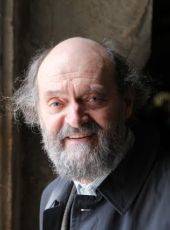
Arvo Pärt
*11 September 1935
Arvo Pärt was born in 1935 in Paide, Estonia. After studies with Heino Eller’s composition class in Tallinn, he worked from 1958 to 1967 as a sound engineer for Estonian Radio. In 1980 he emigrated with his family to Vienna and then, one year later, travelled on a DAAD scholarship to Berlin.
As one of the most radical representatives of the so-called ‘Soviet Avant-garde’, Pärt’s work passed through a profound evolutionary process. His first creative period began with neo-classical piano music. Then followed ten years in which he made his own individual use of the most important compositional techniques of the avant-garde: dodecaphony, composition with sound masses, aleatoricism, collage technique. Nekrolog (1960), the first piece of dodecaphonic music written in Estonia, and Perpetuum mobile (1963) gained the composer his first recognition by the West. In his collage works ‘avant-garde’ and ‘early’ music confront each other boldly and irreconcilably, a confrontation which attains its most extreme expression in his last collage piece Credo (1968). But by this time all the compositional devices Pärt had employed to date had lost all their former fascination and begun to seem pointless to him. The search for his own voice drove him into a withdrawal from creative work lasting nearly eight years, during which he engaged with the study of Gregorian Chant, the Notre Dame school and classical vocal polyphony.
In 1976 music emerged from this silence – the little piano piece Für Alina. It is obvious that with this work Pärt had discovered his own path. The new compositional principle used here for the first time, which he called tintinnabuli (Latin for ‘little bells’), has defined his work right up to today. The ‘tintinnabuli principle’ does not strive towards a progressive increase in complexity, but rather towards an extreme reduction of sound materials and a limitation to the essential.
Creative Periods
I. 1958-1968
Neoclassicism – Avant-garde
As befits one of the most radical exponents of the so-called Soviet Avant-garde, Pärt’s oeuvre bears witness to the composer’s own deep-reaching musical evolution. His first period of creativity began with neo-classicist piano music (Two Sonatinas op. 1 and Partita op. 2), with the next ten years being given over to the most important compositional techniques of the avant-garde – twelve tone serialism, sonic fields, indeterminism, collage technique – all of which saw highly original use in his music.
Nekrolog (1960) was the young composer’s first important work and, at the same time, the first twelve-tone work of Estonian provenance. It was both his first success and his first scandal, provoking official accusations of “western decadence”.
Perpetuum Mobile (1963) is one single, pulsing, powerful wave of sound, which is constructed from variously pulsating individual parts. The piece is characterized by its serial structure, which is reduced to radically simple formulae. Both works, Nekrolog and Perpetuum Mobile, garnered the composer initial recognition in the West.
Symphony No. 1 (1963) – the composition with which he earned his diploma. Arvo Pärt left the academy as an experienced and mature composer.
Collage Technique
Collage sur B-A-C-H (1964). Pro et Contra, Symphony Nr. 2 (1966). The composer’s further stylistic development led him to experiment with collage technique. In the works of this period, Pärt juxtaposed two highly discrepant ideas of sound: avant-garde passages alternate with direct quotations or imitations of earlier musical styles. His own music suddenly took on the nature of arena, playing host to battles between the stylistic means of modernity (Pärt’s music) and the simple, transcendental beauty on which he had set his sights (the musical quotations). New and old music stood opposite one another, irreconcilably at odds. This sort of confrontation experienced its ultimate, unsurpassed climax in his last collage work, Credo.
Credo (1968). With this work, in which the composer took on Bach’s Prelude in C Major (WTC 1), Pärt intensified and hardened his musical language to an extreme degree – “an amassment of violent power, straining at its own limits like an avalanche” (Part). This battle between the two musical worlds is concluded by Bach’s victory over the modernistic cataclysms in Pärt’s own music.
II. 1968 to the present
Crisis: 1968-1976
The 'triumph' of the musical quotations in Credo marked a decisive turning-point in Pärt’s development. From that point on, he regarded all his previous compositional techniques as meaningless. Pärt’s quest for his own musical voice drove him into a creative crisis that dragged on for eight years, with the composer unable to predict when he might once again emerge. During this period, Pärt had to “learn how to walk all over again” (Pärt). In the wake of this artistic turning point, Pärt withdrew completely and stopped composing. In search of a new musical language, he studied Gregorian chant, the Notre Dame School and classic vocal polyphony. Pärt’s intensive study of these eras was essential to his new outlook on music, a fact best illustrated by his statement that “…hidden behind the art of connecting two or three notes lies a cosmic mystery.” The composer’s eight years of silence were steeped in the intense desire to comprehend precisely this. Pärt’s long silence was broken only by the Symphony No. 3 (1971), his sole authorized transitional work from this period.
1976: Tintinnabuli
In 1976, the long silence finally gave birth to music – to the piano miniature Für Alina. It is clear that, with this piece, Pärt had found himself, and the compositional technique he used then for the first time inspires his oeuvre to this day. The technique, upon which Pärt has bestowed the name Tintinnabuli (Latin for 'little bells'), is achieved not through a progressive increase in complexity, but much rather results from an extreme reduction of the sonic material and from the discipline of limiting oneself solely to that which is essential.
The Tintinnabuli technique of composition is a process by which a form of polyphony is built out of tonal material drawn from beyond the paradigms of functional harmony. In vocal works, structure and form are additionally subject to all parameters of the text (syllables, words, accents, grammar, punctuation).
At the style’s core lies a 'duality', a new sort of 'basic structure': two parts join to form an inseparable whole. One of the two is the omnipresent major/minor triad, the notes of which are bound to the other – the so-called 'melodic voice' – by strict rules. This 'duality' of two juxtaposed parts, which exist only in connection with one another, joins to form the smallest and most important building block of the Tintinnabuli style.
The combination of this compositional style’s formal logic and its starkly reduced sonic material inevitably results in an extremely dense musical texture. The focus on the basic musical unit remains Pärt’s foremost concern. Thanks to his ascetic compositional approach, his music leaves the listener with an impression of concentration and objectivity. "Music,” says Pärt, “must exist in and of itself … the mystery must be present, independent of any particular instrument … the highest value of music lies beyond its mere tone colour.” This, the composer’s aesthetic credo, has resulted in many hitherto unusual performance practice characteristics. A case in point is the work Fratres. It was originally composed as music in three parts – without, however, being connected to any specific tone colour. Consequently, Fratres can play host to various constellations of tone colours, a fact which has led to versions for various types of ensembles.
The birth of the Tintinnabuli style is rooted firmly in the history of European music. One might view this style as a synthesis of old and new, with classic vocal polyphony on the one hand and serial music on the other. Far from copying either style, the composer has internalized the essences of both and combined them with his compositional technique, which one might call a sort of 'new austerity' (quite literally: 'punctus contra punctum'). The result is an extremely individual world of sound marked by both the impersonal and the personal, by both discipline and subjectivity.
By now, there have been several attempts to label the Tintinnabuli style such as “new simplicity”, “minimal music”, etc. Tintinnabuli is a new phenomenon which is difficult to analyse and classify by way of existing musicological standards. With his compositions, Pärt has brought about a paradigm-shift in modern music, and the attempt to analyse this shift has in turn given rise to its own process of creative discovery.
Nora Pärt, Saale Kareda
* The Credo scandal – At the time of its première, Pärt’s open affirmation of his Christian faith (the sung text 'Credo in Jesum Christum') amounted to an additional political provocation, and it was viewed as an attack on the regime. This scandal was part of the wild, incessant back-and-forth between approval and outright rejection, which had begun with Nekrolog in 1960 and finally culminated in Pärt’s emigration: in 1980, Estonia’s communist government encouraged him to leave the country.
1935 – Born on 11 September in Paide, Estonia.
1938 – Moved with his mother to Rakvere, Estonia.
1945–53 – Rakvere Music School, piano studies with Ille Martin; first attempts at composition.
1950–54 – Rakvere High School.
1954 – Tallinn Music School, composition studies with Harri Otsa.
1954–56 – Military service at Soviet Army, playing oboe, percussion and piano in the Military Band.
1956 – Continuation of studies at music school, now with Veljo Tormis.
1957–63 – Tallinn Conservatory, composition studies with Heino Eller.
1958–67 – Sound Engineer at Estonian Radio.
Since 1967 – Freelance composer.
1958-68 – First creative period starting with neo-classicist piano music; experiments with serial techniques, aleatoricism, collage and sonic fields. Works like Nekrolog (1960), Perpetuum mobile (1963), Collage sur B-A-C-H (1964), two symphonies (1963 and 1966), Pro et contra (1966).
1968 – Credo, conclusion of his first creative period. In this work the confrontation between two musical worlds – Bach’s Prelude in C Major (WTC 1) and Pärt’s own dodecaphonic music attains its most dramatic expression. An open affirmation of Christian faith caused a scandal in Soviet Estonia and the piece immediately became banned.
1968-76 – New artistic reorientation. In search of a new musical language, he studied Gregorian chant, the Notre Dame School and renaissance polyphony. Pärt’s long silence was broken only by the Symphony No. 3 (1971), his sole authorized transitional work from this period.
1976 – Für Alina is the first composition in tintinnabuli-technique (tintinnabulum – Latin for ‘little bell’), which inspires his oeuvre to this day. The musical material of Pärt’s works is extremely concentrated, reduced to the essential.
1976–77 – 15 tintinnabuli-compositions, including Tabula rasa, Cantus in Memory of Benjamin Britten, Fratres, Summa.
Première of Tabula rasa in Tallinn, September 30, 1977 by Gidon Kremer (violin), Tatiana Grindenko (violin), Alfred Schnittke (piano), Tallinn Chamber Orchestra and conductor Eri Klas.
1980 – Emigration to Vienna; contract with the publisher Universal Edition.
1981 – Grant from the German Academic Exchange Service (DAAD), moving to Berlin.
1982 – Passio, commissioned by Bavarian Radio and premièred in Munich by the Bavarian Radio Choir, soloists, instrumental ensemble and organ, conductor Gordon Kember.
1984 – Beginning of the creative collaboration with the CD label ECM and producer Manfred Eicher. Release of the CD “Tabula rasa”, which launched a whole new series of recordings under the title ECM New Series. Since then all authorised first recordings of major works with ECM.
1985 – Stabat Mater, commissioned by Alban Berg Foundation and premièred in Vienna by the Hilliard Ensemble, Gidon Kremer (violin), Nabuko Imai (viola) and David Geringas (violoncello).
Te Deum, premièred in Cologne by the Kölner Rundfunkchor, Kölner RSO and conductor Dennis Russell Davies.
1989 – Miserere, commissioned by and premièred at Festival d’Eté de Seine-Maritime, Rouen, by Hilliard Ensemble, The Western Wind Chamber Choir and Instrumental Ensemble, conductor Paul Hillier.
1989-2011 – Eight Grammy nominations mostly for the best contemporary composition.
1990 – Berliner Messe, commissioned by 90. Deutschen Katolikentages Berlin and premièred in Berlin by Theatre of Voices and conductor Paul Hillier.
1991 – Honorary membership of Royal Swedish Academy of Music, Stockholm.
Silouans Song, commissioned by Svenska Rikskonserter and premièred in Rättvik, Sweden by Chamber Orchestra of the festival Music at Lake Siljan and conductor Karl-Ove Mannberg.
1994 – Litany, premièred in Eugene, USA, by the Hilliard Ensemble, Oregon Bach Festival Chorus and Orchestra, conductor Helmut Rilling.
1996 – Honorary membership of American Academy of Arts and Letters, New York.
Dopo la vittoria, commissioned by the City of Milan in commemoration of the 1600th anniversary of the death of Saint Ambrose and premièred in Milano in 1997 by Swedish Radio Choir and conductor Tõnu Kaljuste.
1997 – Kanon Pokajanen, composed for Cologne Cathedral’s 750-year anniversary, premièred in 1998 in Cologne Cathedral by Tõnu Kaljuste and the Estonian Philharmonic Chamber Choir.
1998 – Como cierva sedienta, commissioned by and premièred at the Festival de Música de Canarias in 1999, by Patricia Rozario, Copenhagen Philharmonic Orchestra and conductor Okko Kamu.
1999 – Cantique des degrés, commissioned by the Princess of Hanover for the 50th anniversary of the coronation of Rainier III, Prince of Monaco; premièred in Monaco Cathedral by Monte Carlo Opera Choir, Monte Carlo Philharmonic Orchestra and conductor Tõnu Kaljuste.
2000 – Cecilia, vergine romana, commissioned by Agenzia Romana for the events of Holy Year 2000; premièred in Auditorium Roma by the Choir and Orchestra of the Accademia Nazionale di Santa Cecilia, conductor Myung-Whun Chung.
Receives the Herder Prize, Germany.
2002 – Lamentate, for piano and orchestra, subtitled Homage to Anish Kapoor and his sculpture ‘Marsyas’, premièred in 2003 in London, in the Tate Modern’s Turbine Hall by Hélène Grimaud, London Sinfonietta and conductor Alexander Briger.
2003 – Classic Brit Award – Contemporary Music Award for Orient [&] Occident.
In principio, commissioned by Diocese Graz-Seckau for the program “Graz 2003 – Culture Capital of Europe” and premièred by choir pro musica graz and Capella Istropolitana, conductor Michael Fendre.
2004 – Da pacem Domine, a cappella work commissioned by Jordi Savall. In 2007 a recording of the piece (in collaboration with Estonian Philharmonic Choir and conductor Paul Hillier; Harmonia Mundi) wins Grammy Award as best choral recording.
L’abbé Agathon, commissioned by l’Association l’Octuor de Violoncelles / Rencontres d’Ensembles de Violoncelles de Beauvais and premièred in Beauvais by Barbara Hendricks and Beauvais Cello Octet.
2005 – La Sindone, commissioned by Festival Torino Settembre Musica for the Olympic Winter Games 2006 in Turin and premièred in Turin Cathedral by Estonian National Symphony Orchestra and conductor Olari Elts.
Composer of the Year, Musical America, USA.
2007 – Nominated for Grammy Award for Da Pacem CD (Harmonia Mundi).
2008 – Receives the Léonie Sonning Music Prize, Denmark, and composes These words…, commissioned by Léonie Sonning Music Fond and premièred by Danish National Radio SO and conductor Tõnu Kaljuste in Copenhagen.
Symphony No. 4, ‘Los Angeles’, premièred in 2009 by Esa-Pekka Salonen and the Los Angeles Philharmonic at the Walt Disney Concert Hall, USA. The work receives its UK première at the BBC Proms in 2010.
Stabat Mater, new version for mixed choir and string orchestra, commissioned by Tonkünstler-Orchester Niederösterreich; premièred in Musikverein, Vienna, by Tonkünstler Orchester and Wiener Singverein, conductor Kristjan Järvi.
2010 – Adam’s Lament, commissioned by Cultural Capital Istanbul 2010 and Cultural Capital Tallinn 2011, premièred in Hagia Irene, Istanbul by Estonian Philharmonic Chamber Choir, Vox Clamantis, Borusan Istanbul Philharmonic Orchestra and conductor Tõnu Kaljuste.
The Arvo Pärt Centre is established in Laulasmaa, Estonia, which holds composer’s personal archive.
Celebrations of Pärt’s 75th birthday include three international conferences: „Arvo Pärt and Contemporary Spirituality Conference” at Boston University, „Arvo Pärt: Soundtrack of an Age” at London’s Southbank Centre and „The Cultural Roots of Arvo Pärt’s Music” in The Estonian Academy of Music and Theatre, Tallinn.
2011 – Returns to Estonia where he resides today.
Classic Brit Award – Composer of the Year for Symphony No. 4.
Honorary Doctorate of the Pontifical Institute for Sacred Music, Vatican.
Is elected first ever Academician for Music by the Estonian Academy of Sciences.
Member of the Pontifical Council for Culture, Vatican.
2012 – BBC’s one-day festival „Total Immersion” in London, dedicated to the music of Arvo Pärt.
Estonian Music Council Composition Award.
Prize of the International Festival Cervantino, Mexico.
Honorary Doctorate of University of Lugano, Faculty of Theology, Switzerland.
2013 – Special program of concerts dedicated to the music of Arvo Pärt held in Schleswig-Holstein Music Festival, August 9.–11. Kanon pokajanen, Te Deum, Adam’s Lament, Tabula rasa and Symphony No. 3 were performed among others.
During the 2013/2014 academic year, professor of Fine Arts at the University of Tartu. Lectures on Arvo Pärt are given by Professor Toomas Siitan (Estonian Academy of Music and Theatre).
2014 – Swansong, new version of Littlemore Tractus for orchestra, commissioned by and to be premièred in Mozart Woche 2014, January 29, Salzburg, by Wiener Philharmoniker and conductor Marc Minkowski.
Nominated for Grammy Award for Adam’s Lament (ECM)
2015 – Awarded the Cross of Merit First Class from the EELC
2016 – Greater Antiphons premièred by Gustavo Dudamel and the Los Angeles Philharmonic
2017 – awarded the Cultural Merit Order of Romania; awarded the Ratzinger Prize
2018 - Gloria-Aris Medal, Poland's highest cultural award for cultural merit
2018 - Publication of a graphic novel by Estonian graphic artist and cartoonist Jonas Sildre (published in German in 2021) "Zwischen zwei Tönen. From the life of Arvo Pärt."
2018 - Opening of the Arvo Pärt Centre in Laulasmaa (Estonia) on 13 October
2019 - German Music Author Award in the choral music category
2020 - BBVA Foundation Frontier of Knowedge Awards in the Music/Opera category
2021 - Grand Cross of Merit of the Order of Merit of the Federal Republic of Germany
2023 - Polar Music Prize (Swedish music prize)
Timeline courtesy of the Arvo Pärt Centre
Visit our #ArvoPart80 blog.
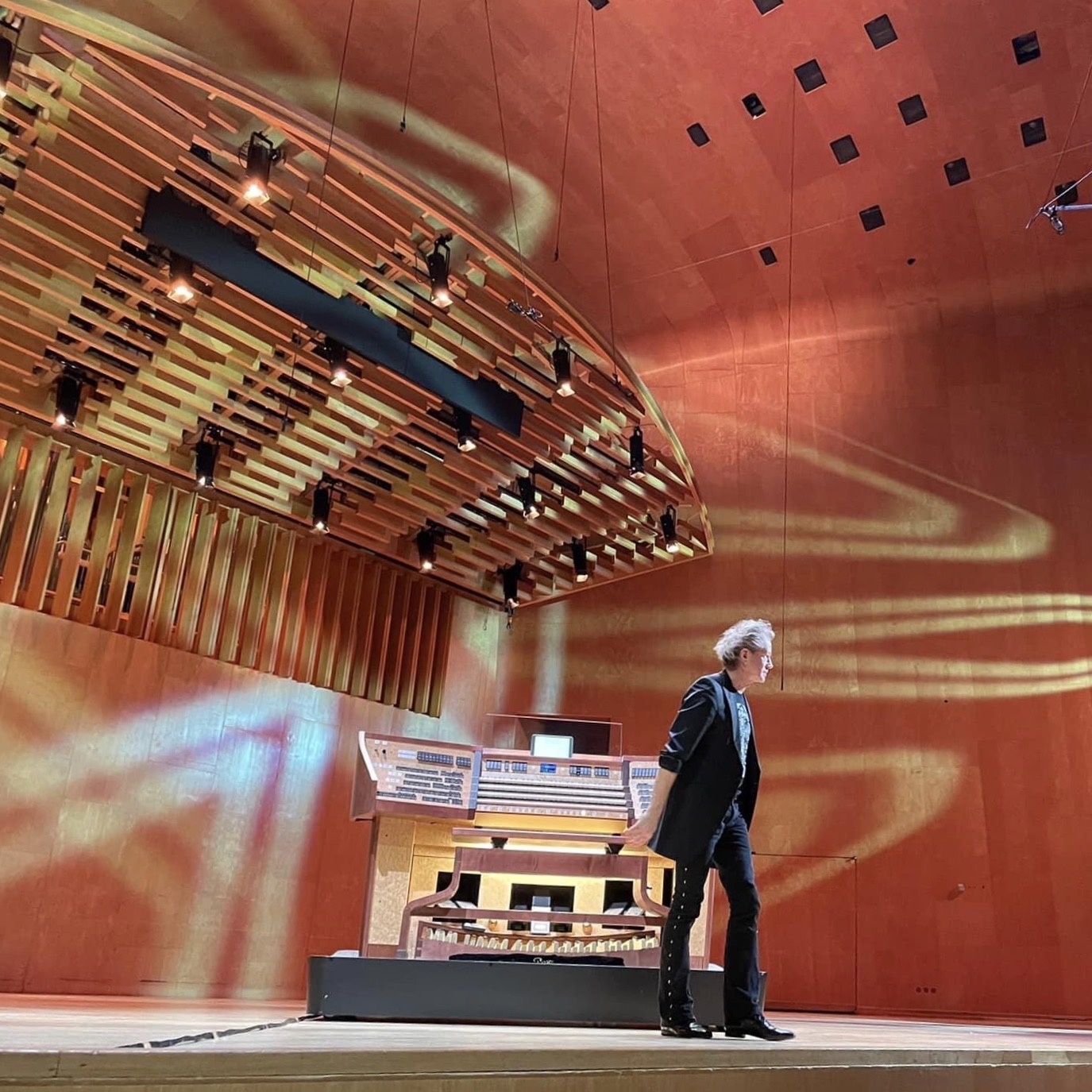
Gunnar Idenstam
*18 November 1961
Gunnar Idenstam, concert organist, composer and folk musician, is know throughout the world for his virtuosic playing, stunning improvisations and untraditional and original take on organ music. Gunnar Idenstam aims to expand his audience's appreciation of the organ and to transcend the limitations of genre.
He comes from a background of classical music, but have always had a "distant love relationship" with the Swedish folk music and the symphonic rock of the 1970s. Today he has brought these influences into the context of organ music when he builds bridges between French cathedral tradition, symphonic rock and Swedish folk music.
To develop the wide-ranging music he creates and performs today he studied at the Royal College of Music in Stockholm, under Anders Bondeman, Rune Ängsö and Torvald Torén, and then studied the French tradition in Paris, under the legendary Marie-Claire Alain and Jacques Taddei. He acheived the highest honours in both countries.
In 1984 he was the first - and to date, the only - musician from northern Europe to win the prestigious international competition in improvisation, the "Grand Prix de Chartres". Since 1986 he has pursued an international career as a concert organist, with recitals in for example Berliner Philharmonie, Mariinsky Concert Hall in S:t Petersburg, Svetlanov and Zaryadie Concert Halls in Moscow, Luxembourg Philharmonie, Suntory Hall in Tokyo, Spivey Hall, Atlanta, Spreckels Organ series in San Diego, USA, and in European cathedrals.
In 2012 he was awarded the “Interpreter of the year” prize by the Royal Academy of Music in Stockholm. The Prize was presented to him by His Majesty King Carl XVI Gustav of Sweden. In June 2013 he received the Litteris et Artibus – a royal medal for recognition of eminent skills in the artistic field. Idenstam is a member of the Royal Swedish Academy of Music since May 2013.
His latest solo CD is of his own music Metal Angel, recorded in in Monaco Cathedral for Toccata Classics.

Jan Emanuel Abras
*1 February 1975
Jan Emanuel Abras, PhD, was born in Stockholm, Sweden. A Vienna-trained, award-winning classical composer, Abras was a pupil of Penderecki and Schwertsik and also studied with composers like Stockhausen, Lachenmann, and Mullenbach at institutions like mdw - University of Music and Performing Arts Vienna, Mozarteum University Salzburg, and Benedetto Marcello Conservatory in Venice. Composer, conductor, musicologist, and historian, Abras holds two PhDs among a dozen degrees. In Vienna, he received awards like the Theodor Körner Preis, handed over by the President of Austria, the 2nd Reinl-Preis, and the 2nd Wiener Filmmusik Preis. Abras's works have been performed in 20 countries at international festivals like Warsaw Autumn, Gaudeamus Music Week, and Manca Festival, at venues like Mozarteum Foundation Salzburg, Bimhuis-Muziekgebouw aan 't IJ, and Hellerau – Europäisches Zentrum der Künste. Abras's works have been commissioned, recorded on 12 CDs, and performed by groups like Tonkünstler Ensemble in Vienna, Ensemble Aleph in Paris, and Kwartludium Ensemble in Warsaw. Abras has worked as a composer-in-residence, university professor, researcher, conductor, pianist, and music engraver. Abras is a member of the Austrian Composers Association, Sacem, and his works are published by Universal Edition in Vienna.

Jarmo Herkman
*28 August 1964
Jarmo Herkman was born in a small city near Helsinki, the capital of Finland, in 1964. He studied musicology, literature, aesthetics and psychology at the University of Helsinki, piano playing and piano pedagogy at the conservatories in Helsinki and in Turku and music theory and composing with leading teachers at the Sibelius Academy. Besides music, he has worked as a psychologist and a psychotherapist and published poems. He has taught piano playing, music theory and history of music. He is a versatile pianist and performs both classical and other genres as a solo player as well as a chamber musician. He has made numerous arrangements in many genres for concert performances. As a composer, he likes to compose also in other genres in addition to classical music. His compositions have been performed in Finland, his native country, and abroad.

Johannes Jansson
*24 July 1950
At its core, Johannes Jansson’s life work is characterised by the earnestness of his creative voice and deep sense of emotional honesty, beyond the music's considerable qualities of style and technique. Here is a search for inner truth, clarity and freedom of spirit.
This quest is passionate, leads through forests of chaos, whilst also touching the sensuous.
Jansson's music can be truly intimate – the Swedish word "innerlighet" is appropriate, which speaks of an inner world, and of quietness and warmth. But his musical scope can also verge onto the gigantic – the colouristic sweep of a Romantic: at its richest, in some of his orchestral scores in later years, such as in the "Hymn to the Mystic Fire" (2003-04) and, indeed, in parts of his consummate work for orchestra, choir and soloists, the "Peace Symphony" (2014-15), in which so many aspects of Jansson's vision come to meet.
Johannes Jansson (born in 1950) grew up partly in Stockholm, partly in the vicinity of Ravlunda in Österlen – the culturally vibrant, rural south-eastern part of Sweden where he now resides. Following studies at the Malmo and Stockholm Conservatories, and having gained experience as an orchestra and chamber musician, as conductor and double bass player, Jansson established his personal path as composer towards the mid 1970:s with a fine series of chamber works for solo flute and solo violin (both 1973) and the string quartet. His Second String Quartet (1975-76) is an expansive composition in a traditional four-movement form. Superficially it could be termed conservative, with strong memories of the late Beethoven Quartets passing by – but in its softly spoken way, this is a work of integrity; a free and deeply personal creation, where the music develops with natural – and radical – ease.
A period of inner probing in the early 1980:s prepared the way for Jansson's first two large-scale orchestral works. In “ The Mutation of Death '' (1985), gradually growing tensions in harmony and rhythmic gesture call forth a transformation – a new life personified by a dramatically soaring soprano cantilena. – The luminous ”Nimbus” (for baritone and orchestra, premiered by The Royal Philharmonic Orchestra in 1986) seems to shed a layer of late Mahlerian influence in its sound-world, coming out distinctly on the personal side. Jansson uses the crisp, sun-drenched chamber sound of the orchestra as part of an ecstatic ritual, where the song soloist develops the poetic words by Georg Backman in a chant-like manner, transcending the boundaries of individualism.
"Nimbus" and "The Mutation of Death" are both profound statements of Jansson's continuing devotion to Indian philosophy and literature developed over a number of visits, especially at the Sri Aurobindo Ashram in Pondicherry and the neighbouring community of Auroville. Working within the Western tradition, his Indian experience has been a wake-up call to challenge ingrained and restricting world-views. This earnest spiritual concern, to break down mental barriers, foreshadows the deeper concept of "peace" in the culminating "Peace Symphony".
The later part of the '80:s saw a fruitful collaboration in a number of music-dramatic projects with the scenographer and librettist Marta Cicionesi, Jansson's creative partner and wife since 1985 (the one-act opera "Day´s Twilight Night" and the children’s choir opera "The Only Escape" – based on a story by Marguerite Yourcenar – were premiered during 1988-90).
Jansson has described the following years up to the middle of the 1990:s as a severe emotional crisis, when composing came hard. There is a more abstract feel than elsewhere to the two chamber works from this period, the Trio (violin, cello, piano, 1989) and the Third String Quartet (1993). In these works, Jansson seems to come close to an idea of ”absolute”, strictly non-programmatic music. There is also, particularly in parts of the Quartet, a harder grit to it, which does not preclude that this part of Jansson’s oeuvre is engaging and at crucial moments intensely beautiful (witness the wistful canonic dying-out of the Trio).
Evidently, happier times saw the coming of new major chamber compositions in close succession around the turn of the century. These were all connected with treasured colleagues such as the flautist Anna Norberg and guitarist Mats Bergström (Flute & Guitar Sonata 1998); the pianist Hans Pålsson (Piano Sonata 1999); and the clarinettist Kjell-Inge Stevensson (“Nadaswaram” for clarinet 2006 and ”Chiarezza” for Clarinet and Piano 2001). The centrepiece of these sensitive and warmly sonorous works is the refined Piano Sonata, flowing between the meditative and dramatic, classically proportioned and concentrated.
With the first years of the millennium came the composition of Jansson's grandest purely orchestral piece, the almost hour-long "Hymn to the Mystic Fire '', premiered by Malmo Symphony Orchestra in 2005. Here, characteristics of both orchestral poems of 1985-86 seem to coerce. But everything is larger, the soundscape is wider, the registral scope as well as the variety of the instrumentation maximized. While in "Nimbus" there were bells and harp, here there are also big gongs, piano, xylophone and massive percussion in addition to the full orchestra. A huge symphonic painting, evolving from stormy sea-billows into complete calm and an extensive gong solo as the mystical heart of the piece – and stretching out further, past renewed climaxes towards a final return of the gongs in pianissimo.
Standing out among many works – vocal and instrumental – in the hectic decade succeeding the "Mystic Fire" are two intense Concerto pieces: the Violin Concerto (premiere soloist Sara Trobäck-Hesselink with the Gothenburg Symphony Orchestra in 2010) and the Second Piano Concerto (soloist Martin Sturfält at the premiere with Malmo Symphony Orchestra in 2012). The two Concertos were created more or less simultaneously and they stand in fine contrast. The Violin Concerto is a powerful chamber orchestra work – dare one say in a "Nordic" light–tinged spirit – with the violin's continuous lyrical line deftly spurred on by the surrounding winds and strings. The Piano Concerto is a bigger orchestral concept, more of a tightly knit "Symphony with Piano"; with the piano as a freely moving agent, but also an integral part of the fabric.
This symphonic Concerto quite clearly looks forward to the "Peace Symphony", premiered in 2018 by The Swedish Radio Orchestra – as the first work entitled Symphony, though much of the symphonic in character recurs through Jansson's orchestral career. The "Peace Symphony", however, turns out to be the first of Jansson's mature orchestral pieces with something of the classic four movement-division (even though these parts flow together). But this well-balanced, rich and colourful choral Symphony, to the moving words of Tawakkol Karman, does not stay protected within its stylistic bounds – as Jansson seems determined never to do. This work could also be termed Cantata, or even a Mass, in the sense in which Beethoven composed his Missa Solemnis. "Peace Symphony" ends, like Beethoven's "Missa", with an ethereal and impassioned supplication for inner and outer peace – in Jansson's case, for the voices alone: "Peace be upon you"...
for Universal Edition, Mattias Gejrot
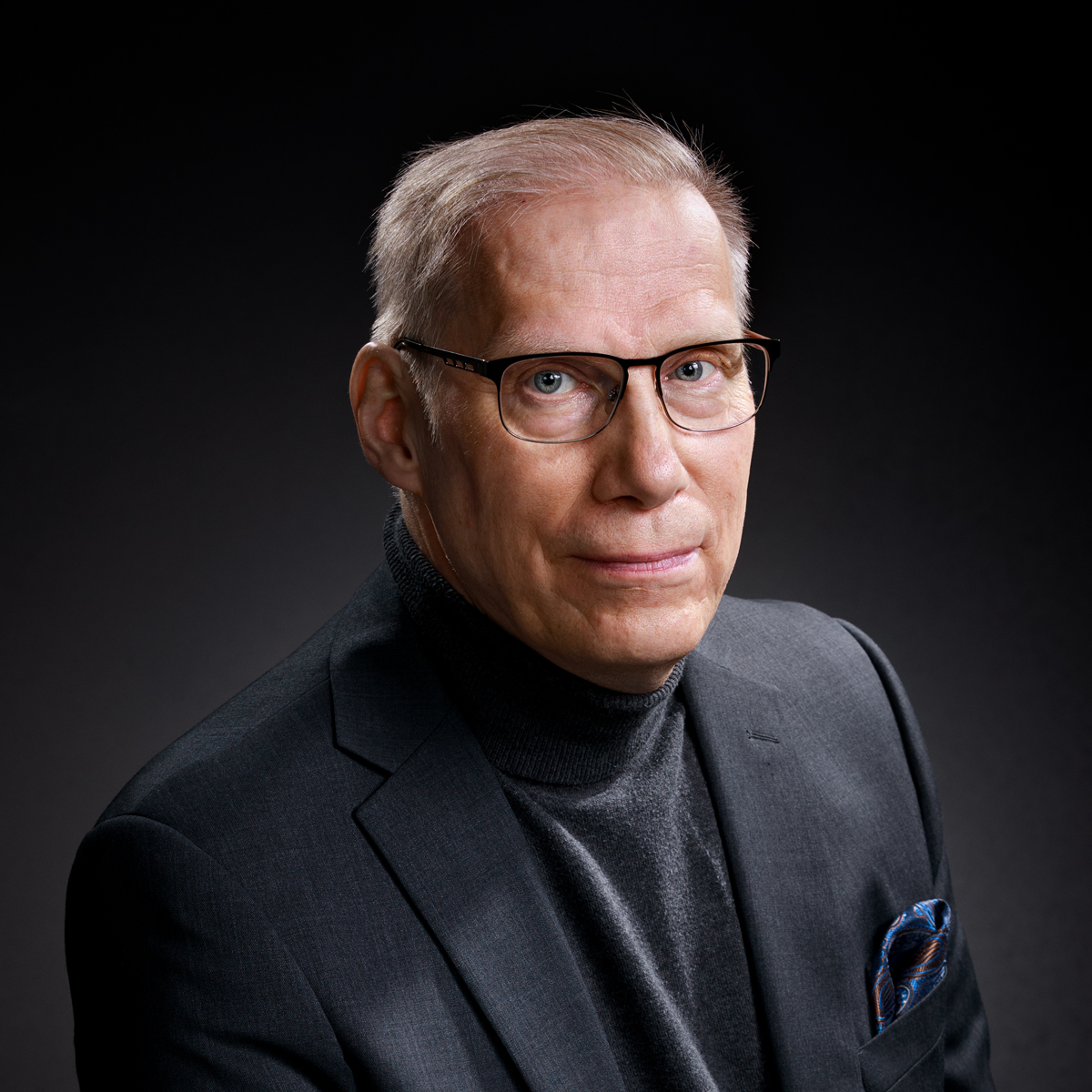
Jouko Tötterström
*22 November 1956
PROFILE: Born in 1956. Tötterström studied in Sibelius-Academy. Doctor of music in 2008. Studies of composition, piano and organ. He is a composer, pianist and pedagogue and is a retired principal lecturer from Oulu University of Applied Sciences (1999-2023). Specialist in piano duo. He has had a long pedagogical career teaching piano, didactics, chamber music and composition.
ADDITIONAL EXPERIENCE: Chairman, Contemporary Music Society Lokakuu ry (2018-2023). Artistic director of Contemporary Music Festival Uuden musiikin lokakuu (2012-2014).
HONORS: Knight of the Order of the Lion of Finland FL K (2023). The Finnish Cultural Foundation / North Ostrobothnia Regional Fund: lifetime achievement award (2024).
PRESENT POSITION: Composer of classical contemporary music. His works have been performed extensively in Finland and abroad. Several of his compositions are commissioned by musicians. He works actively also in collaboration with other arts, such as visual artists, photographers and dancers. COMPOSITIONS: His works include 2 symphonies and other orchestra works, chamber opera, ballet, piano concerto, vocal music, chamber music and piano music.
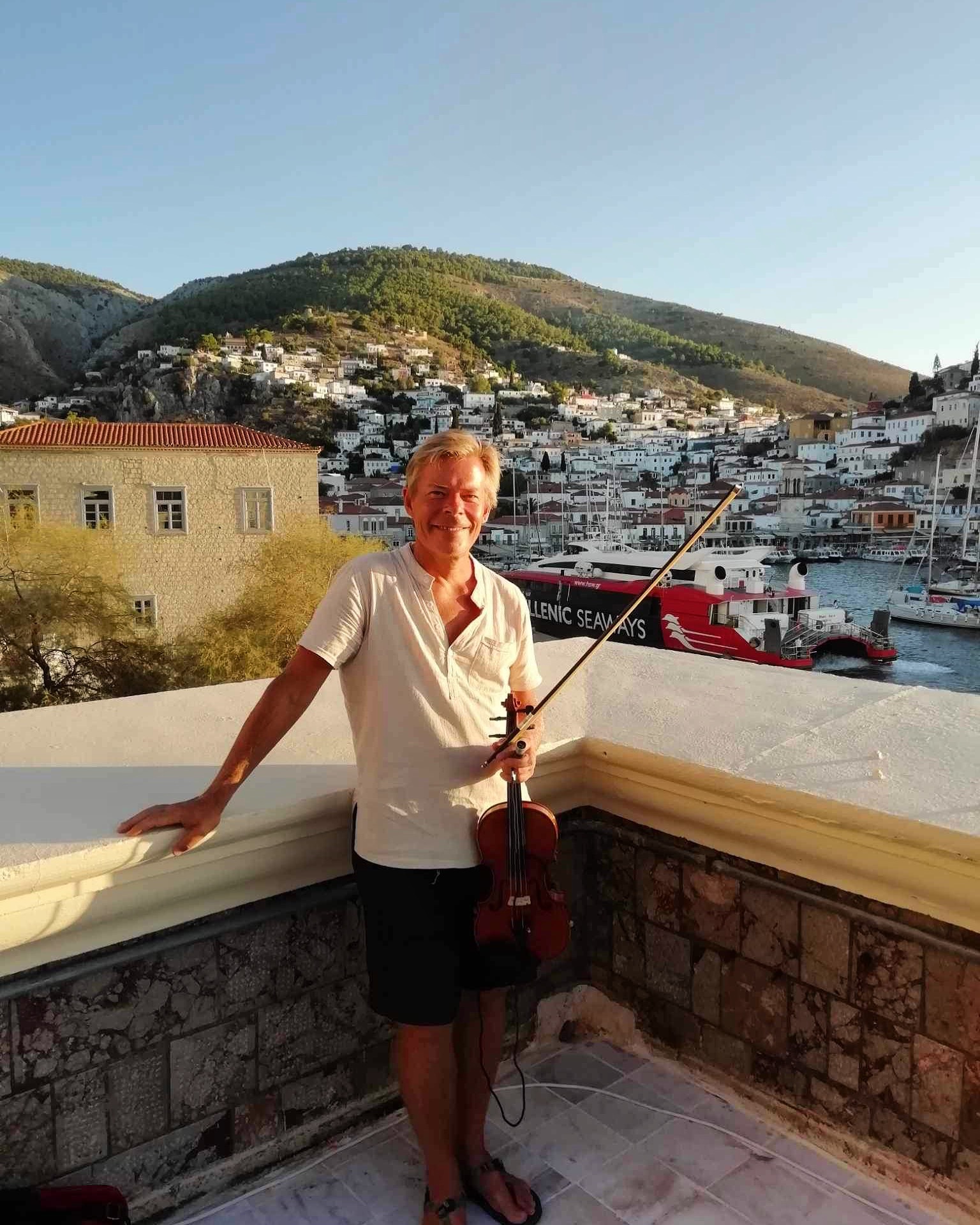
Lauri Hamalainen
*27 March 1972
Lauri Hämäläinen is a Finnish-Swedish string teacher from Helsinki, Finland. He started his school on the first Swedish-speaking music class that was opened in Helsinki. He is educated as a performing musician and music teacher from the Turku Conservatory (2000), Royal College of Music in The Hague (2002) and the High School of Music in Rotterdam (2004). Hämäläinen is the secretary of the string teachers association in Finland (SJO), a member of the Finnish Viola Society (SAVS), American String Teachers Association and The European Chamber Music Teachers Association. Currently Lauri is marketing Violin Friends music books, composing new music and has recently published the first comic book about violin playing called “The Amazing Violin Comics - Tips for practicing and mental images for learning string instruments””. The aim with the comics is to give teachers ideas how to teach with visualization and mental images and to inspire more kids to start to play classical music.
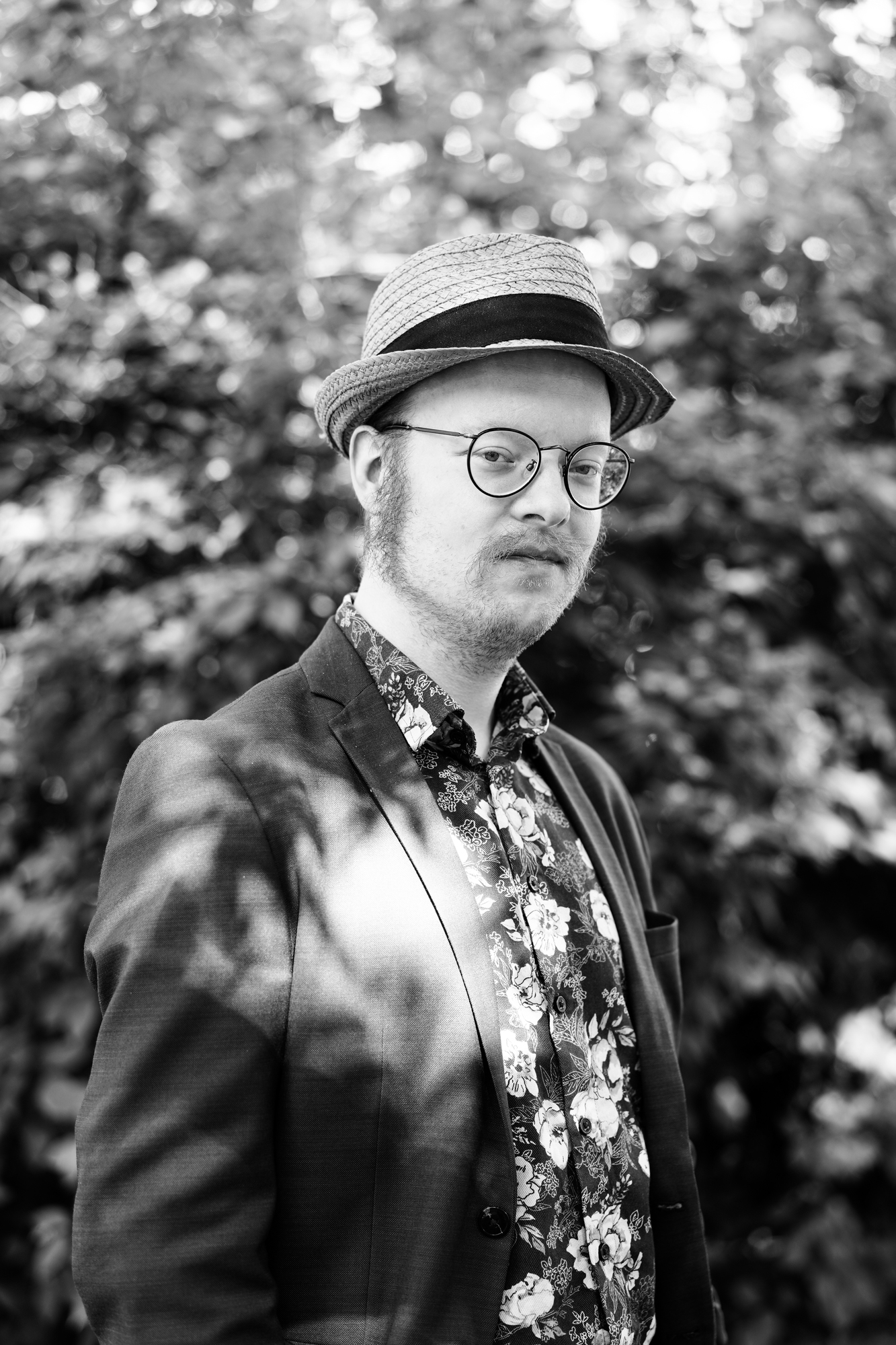
Luukas Hiltunen
*9 December 1996
After having studied two years on a professional undergraduate degree, a versatile Finn musician Luukas Hiltunen graduated from the Lahti Conservatory on May the 30th 2018. He graduated from Tampere University of Applied Sciences on June the 14th 2023 with a Bachelor of Music Pedagogy degree. From 13th September 2023 onwards he has been working full-time as a self-employed entrepreneur, composer and arranger.
Milestones:
- Young Composer of the Year 2024 by Mikkeli Music Festival (announced on 29th July 2023), resulting a commission for mixed choir and symphony orchestra for the 33rd opening concert of the 2024 festival on 3rd August 2024, performed by Helsinki Philharmonic Choir and Saimaa Sinfonietta under the baton of Aliisa Naige Barrière – Scintillation for mixed choir and symphony orchestra (2024) to the poem Hope is a Thing with Feathers by Emily Dickinson (1830–1886) to precede Ludwig van Beethoven's (1770–1827) Symphony No. 9 in D minor, Op. 125 (1824).
- A commission by Gewandhausorchester Leipzig – a two-movement reconstruction of Felix Mendelssohn Bartholdy's (1809–1847) unfinished Symphony No. 6 in C major (1842–1846; 2023), drawing on the manuscripts housed in the Bodleian Libraries, University of Oxford. The world premiere performance took place on October the 24th 2024 in Vaasa, at a concert of the Vaasa City Orchestra conducted by James Sherlock. Critic Jari Kallio's review can be read here.
- World premieres of the reduced versions of Pyotr Ilyich Tchaikovsky's (1840–1893) Dance of the Sugar Plum Fairy and Waltz of the Snowflakes from The Nutcracker by Chamber Orchestra of Lapland on 13th October 2022 at Korundi House of Culture, Rovaniemi, Finland, in cooperation with ballet studets from the Lapland Music and Dance Institute. A subsequent performances of Waltz of the Snowflakes occurred on 14th December 2023 in Lappeenranta and on 15th December 2023 in Mikkeli at the Christmas concerts by Saimaa Sinfonietta under the baton of Erkki Lasonpalo.
- World premiere of the reduced setting of Gioachino Rossini's (1792–1868) The Barber of Seville Overture, commissioned by Chamber Orchestra of Lapland, on 11th September 2023 by Chamber Orchestra of Lapland in the Levi Summit, Kittilä, Finland. The further performance took place on 15th September 2023 in Tromsø Cathedral, Tromsø, Norway.
- In March 2024 a commission by Kuopio Symphony Orchestra – Chamber Symphony in F major based on Antonín Dvorák's (1841–1904) Quartett F-Dur.
- In November 2024 a commission by Chamber Orchestra of Lapland – reduction for chamber orchestra featuring piano of Pyotr Ilyich Tchaikovsky's Romeo and Juliet Fantasy Overture (1880 / 2024), the first of its kind. The reduction was prepared just in mere three weeks and the world premiere performance took place on January the 29th, 2025, in Korundi Cultural Centre, Rovaniemi, performed by Chamber Orchestra of Lapland.
- World premiere of Symphony No. 1 for full orchestra (2020) on 18th April 2022 in the Järvenpää Hall, performed by Sinfonia Vivo under the baton of its Artistic Director Erkki Lasonpalo.
- World premiere of the meditative composition Do not let your hearts be troubled for soprano and chamber orchestra (2019) on 20th March 2019 at the Church of the Cross (Ristinkirkko), Lahti, Finland, performed by soprano Janina Mäyry and Ensemble de Ton Celeste under the baton of the composer.
- World premiere of his arrangement for violin solo, harp and string orchestra of Jules Massenet's (1842–1912) Méditation (2019) on 12th February 2020 at the Felix Krohn Hall, Lahti, Finland, performed by violinist Juliana Pöyry and New Lahti Chamber Orchestra under the baton of Janne Saarinen.
- World premiere of 15-minute fantasie de concert Conversion (2019) for piano, performed on 28th November 2022 in the Small Auditorium of Tampere Hall by pianist Ville Hautakangas.
- World premiere of String Quartet No. 1 (2022), subtitled as A tale of two lovers, by String Quartet ILME on 25th November 2022 at the Haihara Art Centre in Tampere.
- Publication in Spring 2019 by Edition Wilhelm Hansen Copenhangen of the arrangement for String Quartet of Jean Sibelius's (1865–1957) Scene d'Amour, Op. 71 (2019), originally composed for violin and piano [WH33255].
- On September 8th, 2018, Sinfonia Lahti (Lahti Symphony Orchestra) presented the world premiere performance under the direction of Dima Slobodeniouk of the transcription for symphony orchestra of Jean Sibelius's Intrada, Op. 111a (1925; 2018), originally for organ, from Two Pieces, Op. 111.
- Publication in June 2023 by Edition Wilhelm Hansen Copenhagen of the arrangement for chamber ensemble of Sibelius's The Tempest Suite, Op. 109 [WH33640], commissioned by Ruovesi Chamber Music Festival.
Since Autumn of 2017 he has been the member at the Association of Finnish Sheet Music Engravers (Suomen nuottigraafikot ry.) and from August of 2020 at the Association of Finnish Musicians' Union (Suomen Muusikkojen Liitto).

Martin Lohse
*29 May 1971
Martin Lohse (b.1971) holds an Advanced Postgraduate Diploma in Composition and a Masters in Music Theory at the Royal Danish Academy of Music, where he studied with Niels Rosing-Schow and Hans Abrahamsen. Lohse has written works for choir, for orchestra, for chamber music ensembles and for soloist with and without electronics. He has written more than 100 works – performed nationally and internationally 500-100 times a year, where they reaches such diverse venues as Scandinavia, Europe, Asia, North and South America and Australia with performances of his orchestral works in Germany, Italy, Switzerland, Estonia and Denmark and his works for accordion in Carnegie Hall, New York in 2011 and 2018. In the last years he has written several works dedicated to the internationally renowned accordionists, Geir Draugsvoll, Bjarke Mogensen and Hanzhi Wang and his accordion works are played on a regular basis in international accordion communities and festivals.
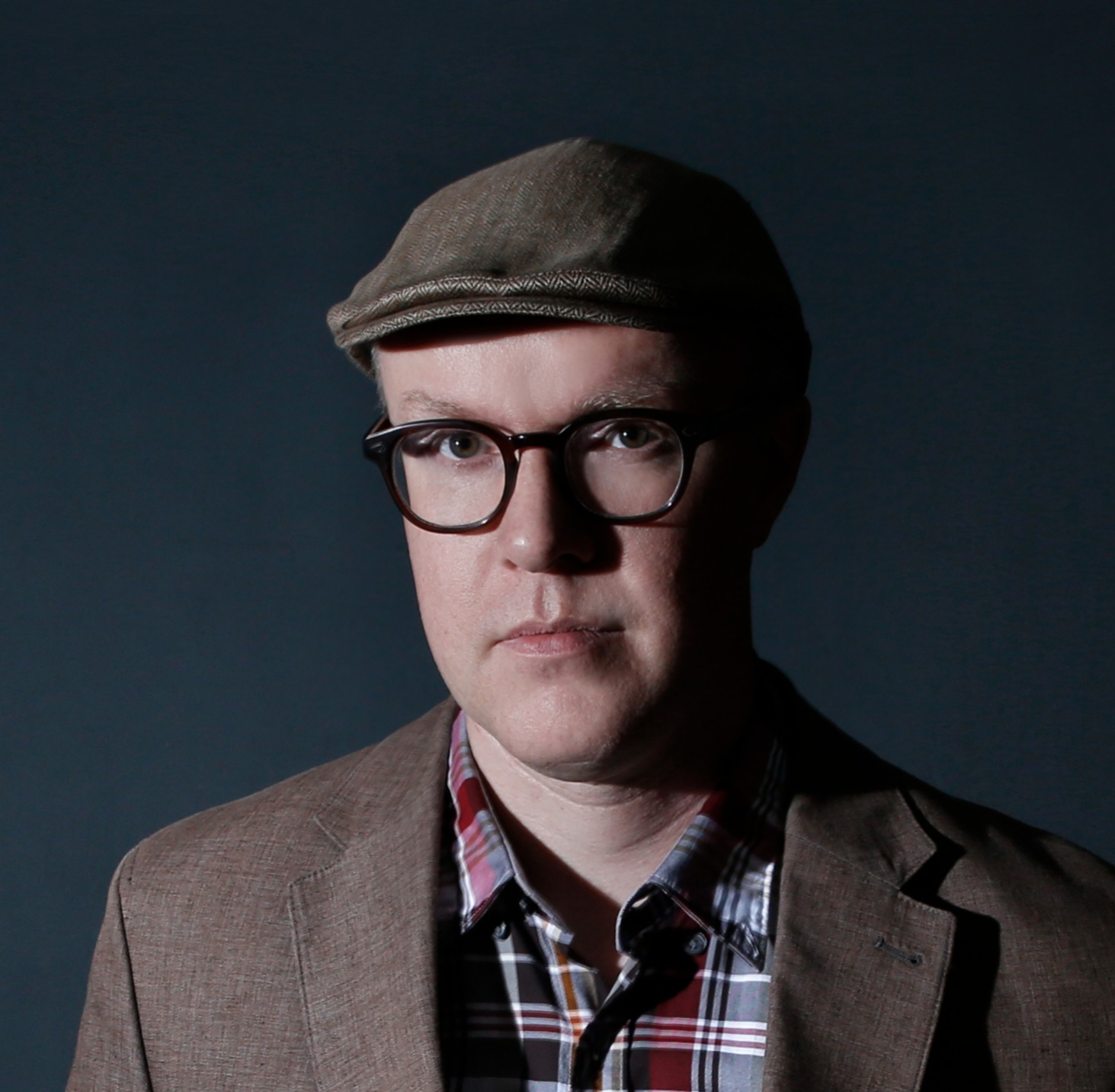
Páll Ragnar Pálsson
*25 July 1977
Páll Ragnar Pálsson (born 1977) is an Icelandic composer. He holds a PhD in music from Estonian Academy of the Arts (2014) but lives in Reykjavík since graduation. Páll has worked with most contemporary music collectives in Iceland and establishes new collaborations with artists all over the world every year that passes. He has released two albums, Nostalgia and Atonement, with his own music and had works published on compilations along others. He has participated at the International Rostrum of Composers twice, once on behalf of Estonia (2013) and Iceland (2018) where he won the first prize for Quake, a concerto for cello and orchestra.
Páll‘s works have been selected composition of the year twice by the Icelandic Music Awards. In later years, Páll has widened his profile in the direction of film scores and his first work, music for the film Quake (2022), a collaboration with Edvarð Egilsson, was nominated both for Nordic Music Film Awards and Edda, the Icelandic Film Awards.
Páll Ragnar has worked with:
soloists such as Martin Kuuskmann, Saeunn Thorsteinsdottir
conductors such as Daniel Bjarnason, Olari Elts, Ilan Volkov, Rumon Gamba and Risto Joost.
orchestras such as Icelandic Symphony Orchestra, Estonian National Symphony Orchestra, BBC orchestra, Seattle Symphony Orchestra, LA Phil
and NDR chamber orchestra.
His music has been played in halls such as Harpa in Reykjavík, Berlin Philharmonie, Elbphilharmonie in Hamburg, Walt Disney Hall in LA and Maide Vale Studios in London.
Páll has an active collaboration going on with the US indie label Sono Luminus.
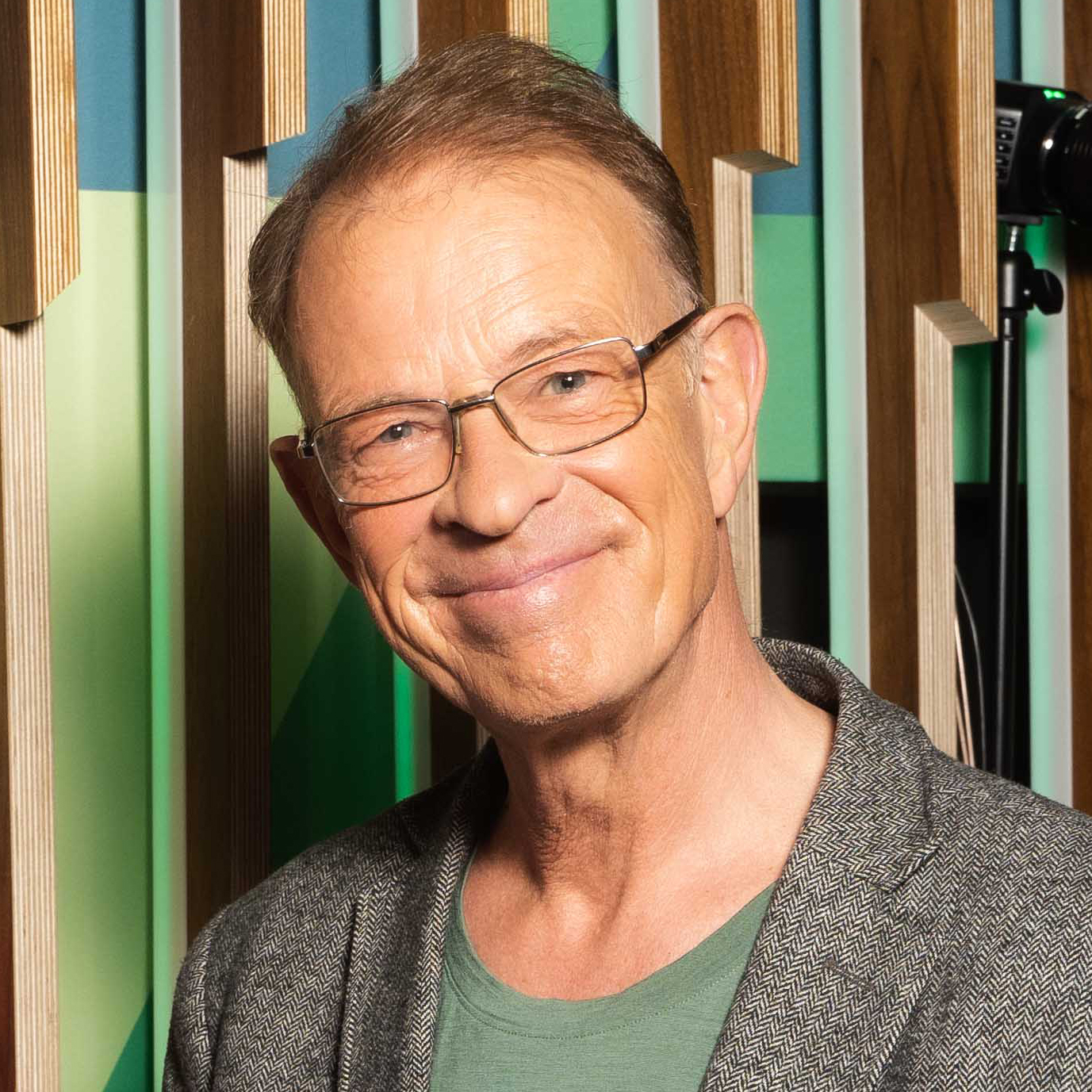
Stein Eide
*3 May 1953
Stein Eide is educated at the University of Oslo, Norway. He studied with Norwegian composer Maj Sønstevold, jazz-pianist Egil Kapstad, and during one season with saxophonist Jan Garbarek. Stein Eide had a Scholarship to the BBC Composers Workshop. For many decades he was a presenter/producer with the music-department of the Norwegian Broadcasting Corporation NRK.
A handful of TV-productions with Stein Eide as a composer have received or been nominated to the international TV awards: “Prix Jeunesse”,” Golden Chest”,” Prix Danube”, and the Norwegian” Gullruten”, while Norwegian radio drama productions “David Copperfield”, “The Weirdstone of Brisingamen”, “Tom Sawyer” and more were released on CD. Stein Eide was the main composer of the Nordic TV series “Myggan” (52 episodes in a collaboration with Swedish SVT, Finnish YLE, Danish DR, and Norwegian NRK).
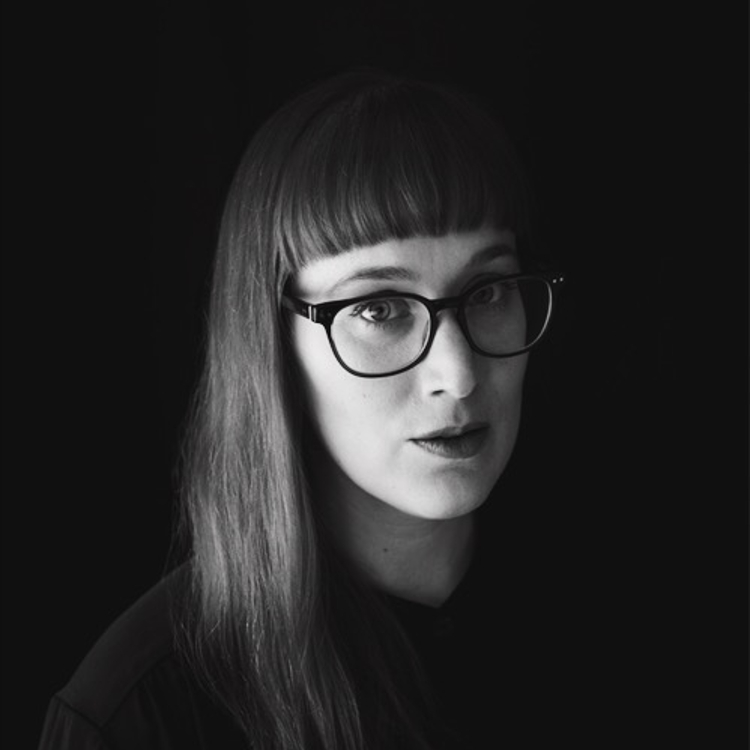
Veronique Vaka
*29 January 1986
Veronique Vaka, born in 1986, is a composer based in Iceland. She studied classical cello performance at Vincent-d’Indy, electroacoustic composition at the University of Montreal and completed a Master's degree in music composition from the Iceland University of the Arts.
Veronique's works are rooted in the geology and topography of Iceland. From the inner core of the Earth to its outer shapes, she explores the narrative of landscapes. Her orchestral piece Lendh, re-imagining the geothermal region of Krýsuvík, was internationally praised by critics and described as "operating on a geologic scale, with tectonic bass textures" by The New York Times and "a marvel" by British music magazine Gramophone. Lendh was nominated for the Icelandic Music Awards and the Nordic Council Music Prize. In 2020, she began a Glacier Series; a compilation of works with the transformation of glacial landscapes as groundwork, to create awareness of climate change. Among these works is the cello concerto Gemæltan written for the renowned Sæunn Þorsteinsdóttir, expressing the melting of Síðujökull: "We are living the most rapid change of Earth’s forces that a single generation has experienced. Glaciers, that before moved at geological speed of centuries and millennia, are now vanishing in a lifetime of a single human being [...]" -programme note by Andri Snær Magnason. Gemæltan received a nomination for the Icelandic Music Awards, Composition of the Year. Also in this series is the viola concerto Vanescere, written for Þórunn Ósk Marinósdóttir, where Veronique observed the changes of Sólheimajökull during one year: "We hear the glacier’s changing shape in movements by degrees: the shifting of one note in a chord, the twisting or contracting of a texture [...]" - programme note by Andrew Mellor.
An important aspect of Veronique's music is the perception of time. It is constructed as an independent layer of music that can fluctuate with different velocities and even come to a complete standstill. It expands, contracts and alters the sense of time.
Veronique has written symphonic works, concertos, and a variety of music for ensembles, from string quartets to large chamber works. She has been performed by celebrated soloists and ensembles across continents. Her works have appeared at a variety of festivals such as Cresc... Biennale für aktuelle Musik, Tertulia Chamber Music, Chamber Music Festival on Valentia, Myrkir Músíkdagar, Tónlistarhátíð Rásar 1, Kammermúsíkklúbburinn and Sumartónleikar í Skálholti. Since 2021, her works have been published by Universal Edition in Vienna.
Among upcoming projects are Erda, a double Violin Concerto for Niklas Walentin and Ensemble Storstrøm, Boreas, a new work for the pianist Pallavi Mahidhara and a new string quartet written for Siggi String Quartet.
Veronique is a member of Tónskáldafélag Íslands (the Society of Icelandic Composers).
OCCURRENCE, released on the 22nd January 2021. Sono Luminus
LENDH, f. orchestra, w/ Iceland Symphony Orchestra and Daníel Bjarnason
Sono Luminus: http://bit.ly/ISOocSL
Spotify: http://bit.ly/ISOocSp
Nýir vængir, released the 18th December 2021, DísaRecords
VÖTN, f. soprano and piano w/ Herdís Anna Jónasdóttir and Bjarni Frímann Bjarnason, poem by Steinunn Arnbjörg Stefánsdóttir
Spotify: https://open.spotify.com/track/2CsDgg0PT4jWGbgEipxfYg?si=7cea71feb1bc47a3
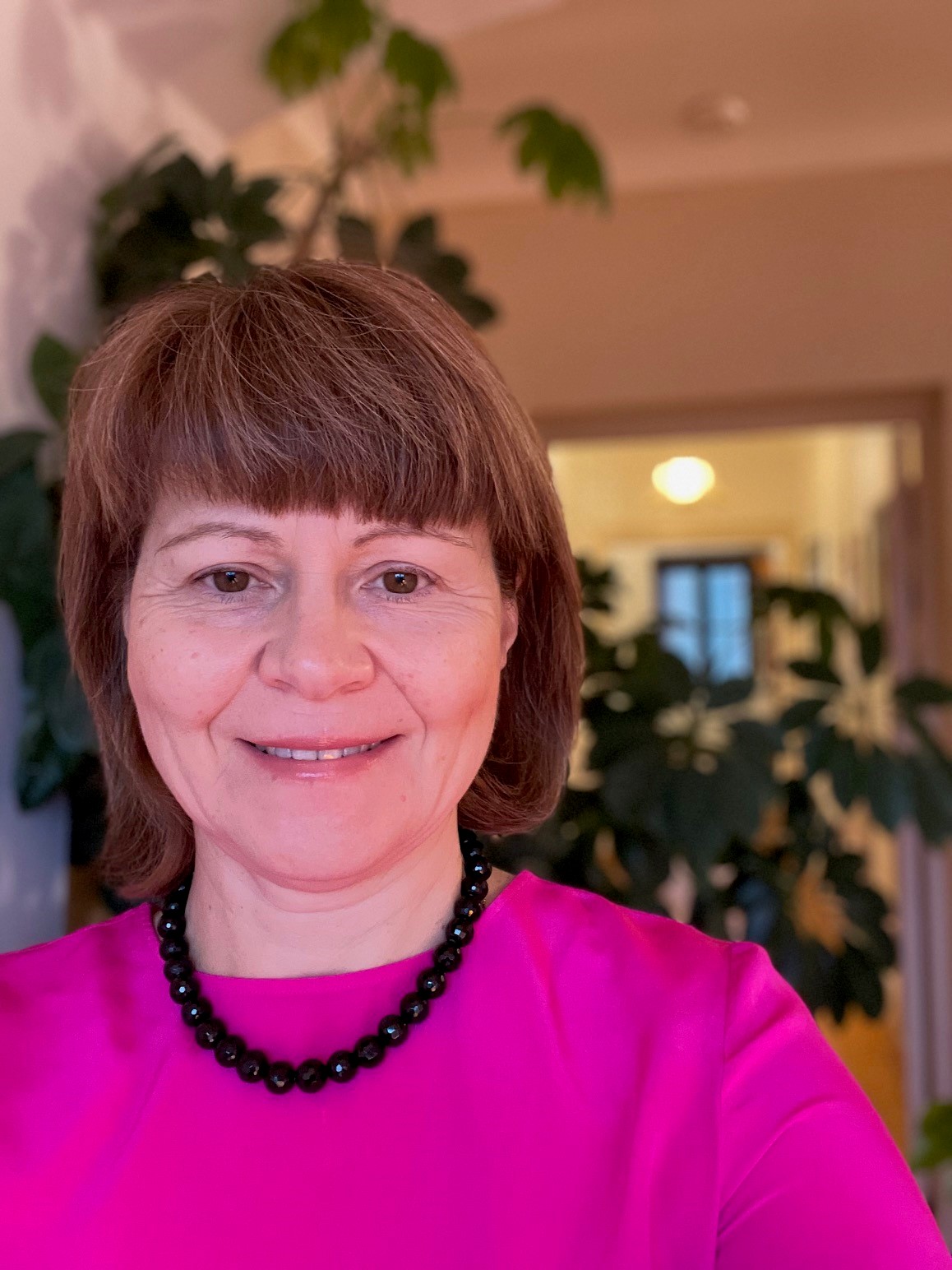
Victoria Borisova-Ollas
*21 December 1969
Victoria Borisova-Ollas was born in 1969 in Vladivostok, a distance of over 9.200 km from Moscow, in the far eastern corner of Russia. In those years there was probably precious little to indicate that the Soviet Union would collapse within a couple of decades. Borisova-Ollas was born late enough to enjoy the freedom afforded by the new political system – such as the freedom to travel – but also early enough to profit from the advantages of the Soviet system of music education. A system which enabled the talented girl to move to Moscow, enrol in the Central Music School and then in the Tchaikovsky Conservatory where she mastered the craft of composition.
At the Conservatory, Borisova-Ollas studied with a number of brilliant teachers. They included Nikolaj Korndorf (1947–2001), to this day a paragon she admires, as witnessed by the dedication of her orchestral work The Kingdom of Silence (2003), a kind of requiem in memory of her professor.
The young composer continued her studies in Britain and in Sweden where she settled in 1992. Predictably enough, a question that is put to her again and again by journalists commissioned to write her portrait concerns the “nationality” of her music. Is she a Russian composer? To what extent has she been influenced by her studies in the West?
Borisova-Ollas refuses to be pinned down to any unequivocal statement. Her music, she says, is “just a healthy blend of everything”, her idiom being closest to the cautious modernism of much of British music. Indeed, you cannot describe her idiom as “avant-garde” by any means. She writes music with the avowed aim of communicating images, sensations, perhaps even messages to her audience.
The urge to communicate could derive from her Soviet or Russian background. In her native country, she says, artists, such as composers, feel a moral responsibility towards society. This is not always the case elsewhere where composers are often preoccupied with musical concerns of a technical nature.
Unlike so many of her compatriots in exile who have over the centuries felt bound to their native country with passionate dedication, Borisova-Ollas is indifferent to the place where she happens to be living: the main thing is, she says, that it is equipped with a working musical infrastructure.
Her messages are often of a religious nature, her main source of inspiration being the Book of Psalms. The titles she chooses for her compositions have frequently been drawn from sacred texts and she says the moment she has settled upon one, images flock to her: choosing a title is the first step, it determines the music she is about to write.
Painting is another source of inspiration. A picture by Malevich gave her ideas for her first symphony, The Triumph of Heaven (2001); three paintings by Chagall are behind Roosters in Love (1999).
Literature plays a role as well: Colours of Autumn (2002) is drawn from Nabokov’s Lolita and Salman Rushdie’s The Ground Beneath Her Feet is the basis of her eponymous composition which she calls “a staged performance for orchestra, singers and narrator” (2006). More recently, she drew on Shakespeare in writing a work for trombone and orchestra: Hamlet. A Drama (2007) has the soloist improvise and even recite from the play. Indeed, the idea for the work – the “show” – came from the trombone player, Elias Faingersh, who took an active role in elaborating the definitive version of the solo part. Victoria Borisova-Ollas “merely” provided the orchestral background.
Sounds – especially as suggestive ones as bells – also give rise to musical ideas. The bells of Munich pealed in her mind, so to speak, when she set about composing a work for the Munich Philharmonic Orchestra: Angelus (2008)was commissioned to mark the 850th anniversary of the city’s foundation.
Victoria Borisova-Ollas has over the years received a number of prestigious prizes, beginning with the Masterprize International Competition for Orchestral Composition where she came second in 1998, an Award of the Royal Swedish Academy for her Symphony No. 1 in 2005, an Award of the Swedish Music Publishers Association for The Ground Beneath Her Feet in 2008 and the Hilding Rosenberg Prize of the Swedish Composers’ Association in 2009.
In 2011, Borisova-Ollas became the first woman ever to win the Swedish Christ Johnson Prize for Composition from the Swedish Royal Academy of Music. The prize was awarded for her clarinet concerto Golden Dances of the Pharaohs.
The world premiere of Creation of the Hymn took place in 2013 in Stockholm at the Tonsättarweekend – a composer portrait dedicated to Borisova-Ollas.
In December 2015 her work Vinden som ingenting minns for choir and orchestra was premiered at the Örebro Konserthus.
On 13 February 2017 she was awarded Expressen’s annual Spelmannen culture award.
Borisova-Ollas is currently working on a new piano concerto for the Swedish pianist Peter Jablonksi.
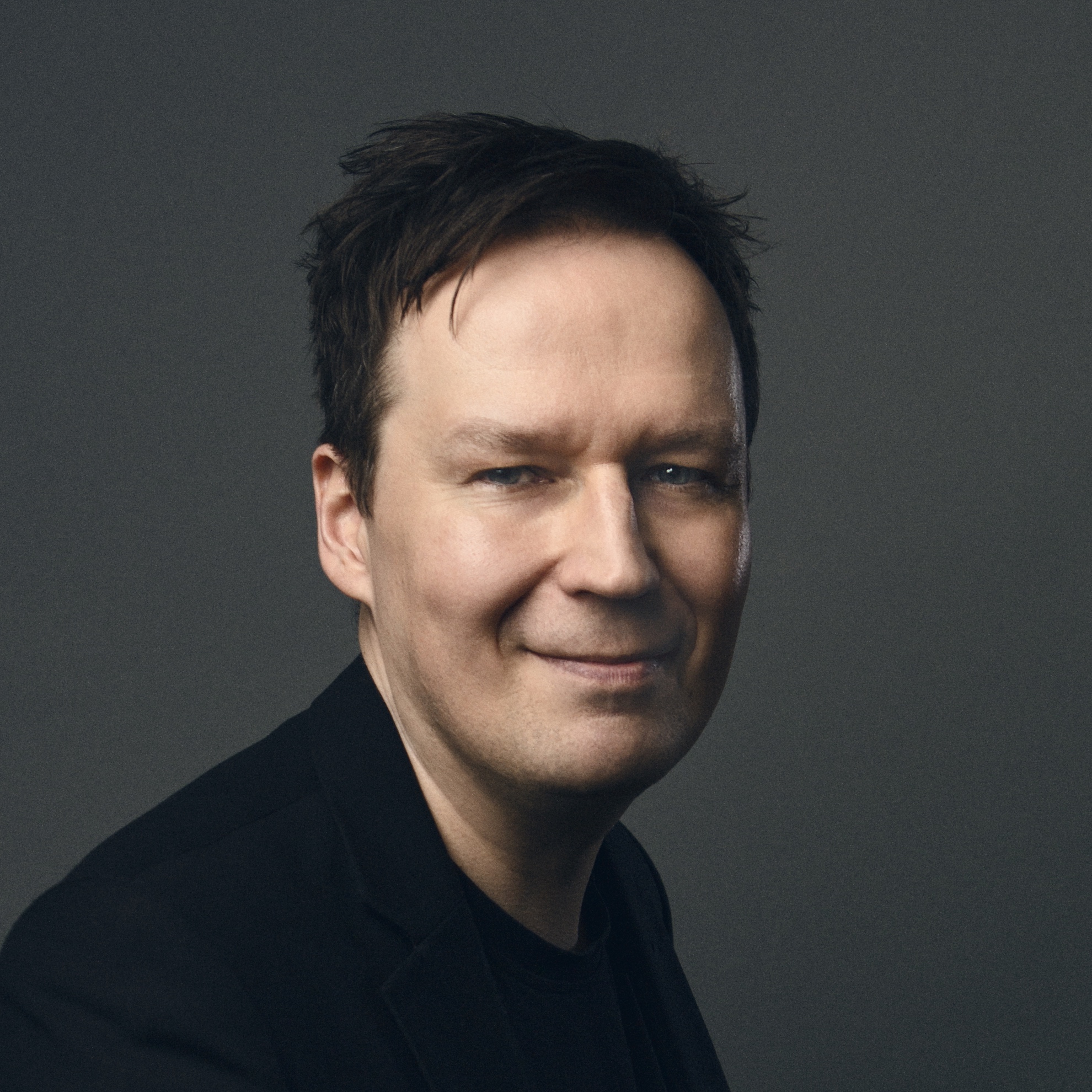
Ville Aslak Raasakka
*1 November 1977
Ville Aslak Raasakka is a Finnish composer based in Helsinki. His orchestral work gained a recommendation at the Unesco International Rostrum of Composers in 2019. Raasakka’s works are performed by the Klangforum Wien (Vienna), der/gelbe/klang (Munich), Mise-en Ensemble (New York) at festivals including Eclat (Stuttgart), Festival Archipel (Geneva), Nordic Music Days (Reykjavik) and the June in Buffalo and the Tage der Neuen Musik Bamberg.
In Finland he has worked with the Finnish Radio Symphony Orchestra, Avanti! Chamber Orchestra, the Finnish Baroque Orchestra, The Helsinki Chamber Choir, defunensemble, the Lapland Chamber Orchestra, Tapiola Sinfonietta and the Tampere Filharmonia.
Raasakka studied composition with Veli-Matti Puumala at the Sibelius Academy and privately with Georges Aperghis in Paris. He complemented his studies on master classes with Helmut Lachenmann, Hans Abrahamsen and Georg Friedrich Haas and studied electronic music on the Ircam Summer Courses. He is currently pursuing a doctoral degree in composition at the Sibelius Academy.
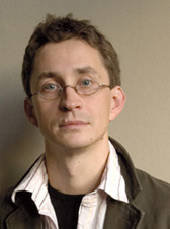
Vykintas Baltakas
*10 July 1972
1972 – born on 10 July in Vilnius/Lithuania
1990–1993 – Vilnius Music Academy (composition studies with Vytautas Barkauskas, conducting with Lionginas Abarius);
Founder and conductor of the vocal ensemble “Penki vejai”, as well as the chamber choir “Aidija” in Vilnius
1990 – Second Prize at the Youth Conductors’ Competition in Kaunas
1991 – Third Prize at the Composers’ Competition “Jauna Muzika” in Vilnius
1993 – Prize at the conductors’ course “Extreme” in Mürzzuschlag (Austria)
1993–1997 – University of Music Karlsruhe (composition studies with Wolfgang Rihm, conducting with Andreas Weiss)
1994 – Centre Acanthes in Avignon
1994–1995 – International Bartók Seminar in Szombathely
1994–1996 – Darmstadt Summer Courses;
works in the ComputerStudio at the HfM Karlsruhe (Institute for new Music and Media)
1996 – Kondrashin Masterclass;
Scholarship from the Heinrich Strobel Foundation for Composition in Freiburg;
Awarded a prize for Pasaka for piano solo at the Darmstadt Summer Courses
1994–1997 – Internationales Peter Eötvös Institute
since 1995 – Assistant to Peter Eötvös at the Karlsruhe Music Academy
1995–1997 – Music Director and Conductor of L’Ensemble du Nouveau Siècle Strasbourg
1997–1998 – Music Director at Schloss Rheinsberg (guest performances at the Mecklenburg Vorpommern Festival, the Leipzig Opera, Schleswig Holstein Music Festival)
1998 – Conservatoire National Supérieur, Paris;
Scholarship at the manor house Edenkoben;
Music Director of a project entitled “Voix[time] with Ensemble Modern and the vocal ensemble Belcanto Frankfurt at the Darmstadt Summer Courses;
Concerts at the Bonn Opera (“Bonn Chance”), Musica Festival Strasbourg and Wien Modern;
Concerts with the Lithuanian Chamber Orchestra at the Vilnius Philharmonic Hall
1999 – Performances at Landmarks99 in Duisburg
1999–2000 – Course at IRCAM in Paris
2000 – Performances at ZKM Karlsruhe, Stedelijke Museum Amsterdam, Cité de la Musique in Paris and Ars Musica in Brussels
2001 – Portrait concert at Gasteig Munich (Klangspuren), premiere of anderes Lied;
double at the Munich Biennale on 28 March
2002 – 13 September: World premiere of Poussla (first edition) for ensemble and orchestra, commissioned by WDR Köln (WDR SO Köln, c. Sylvain Cambreling)
Composition Award for Pasaka, Concours International de Piano XXème siècle d’Orléans
2003 – International Composition Award Claudio Abbado;
15 June: World premiere of about to drink dense clouds for voice, chamber ensemble and tape (Klangforum Wien, c. Vykintas Baltakas), commissioned by Vienna Festival and Klangforum Wien;
concerts: Queen Elizabeth Hall / London, MaerzMusik / Berliner Festspiele, Festival Musica/ Strassburg, Centre Pompidou / Paris
2004 – 18 May: World premiere of the music theatre Cantio (c. Christoph Poppen, Münchener Kammerorchester, Regie: Osvaldas Korsunovas), commissioned by Münchener Biennale;
11 September: World premiere of Ouroboros for ensemble, commissioned by Klangspuren Schwaz (Gaida Ensemble, c. Vykintas Baltakas)
2005 – 24 February: World premiere of (co)ro(na) for ensemble in Hamburg
(NDR SO, c. Vykintas Baltakas);
24 April: World premiere of Ouroboros - Zyklus I for soprano, ensemble and tape, commissioned by Wittener Tage für neue Kammermusik (Klangforum Wien, c. Johannes Kalitzke)
2006 – 25 March: World premiere of Poussla (second edition) for ensemble and orchestra, commissioned by Berliner Festspiele - MaerzMusik (SWR-SO Baden-Baden und Freiburg, c. Sylvain Cambreling)
2007 – 21 April: World premiere of the string quartet b(ell tree), commissioned by Wittener Tage für neue Kammermusik (Arditti String Quartet);
3 May: Ernst von Siemens Grants-in-Aid in Munich
2008 – Lecturer for composition at the Darmstadt International Summer Course for New Music
14 February: World premiere of Instruktionen zur Durchführung einer alten Liebesbeschwörung, die Ihre/Ihren Geliebte(n) auf einmal und für immer an Sie binden wird
2009 – 27 Mai: World premiere of the ensemble work Lift to Dubai for Ensemble Modern
2009 – founded the Lithuanian Ensemble Network
2010 – 29 May: World premiere of Eine Josquin-Promenade for live electronics and choir;
24. September: World premiere of Scoria for orchestra, RSO Munich, c. Lucas Vis, Herkulessaal Munich;
25. October: World premiere of Redditio for ensemble, c. Vykintas Baltakas; Leuven, Belgium, at the Transit Festival
2011 – 2 June: World premiere of Commentum for violoncello and piano
2013 – 28 April: World premiere of Saxordionphonics for saxophone, accordion and chamber orchestra
2013 – 24 August: Eselsbrücke for ensemble is premiered at the Salzburg Festival
2014 – 10 January: World premiere of Redditio 2 in London
since 2015 – professorship at the Conservatorium Maastricht und LMTA Lietuvos muzikos ir teatro akademija (Lithuanian Academy of Music and Theatre)
Co-operation with the following orchestras:
Radio Symphony Orchestra Munich, Deutsches Symphonie-OrchesterBerlin, Rundfunk-Sinfonieorchester Berlin, SWR Symphony Orchestra Baden-Badenand Freiburg, WDR Symphony Orchestra Cologne, Munich Chamber Orchestra, LithuanianState Symphony Orchestra, Lithuanian Chamber Orchestra, etc.
... and ensembles:
Ensemble Modern, Klangforum Wien, London Sinfonietta, MusikFabrik,Scharoun Ensemble Berlin, ICTUS, Arditti Quartet, Neue Vocalsolisten Stuttgart,Ensemble Resonanz Hamburg, Gaida Ensemble Vilnius, Lithuanian EnsembleNetwork, Remix Ensemble, Champ d’Action, Het Collectief, etc.
Radio recordings: Deutschlandfunk (Berlin), WDR (Cologne), SWR (Stuttgart), Hessischer Rundfunk (Frankfurt), Lithuanian State Radio (Vilnius)

